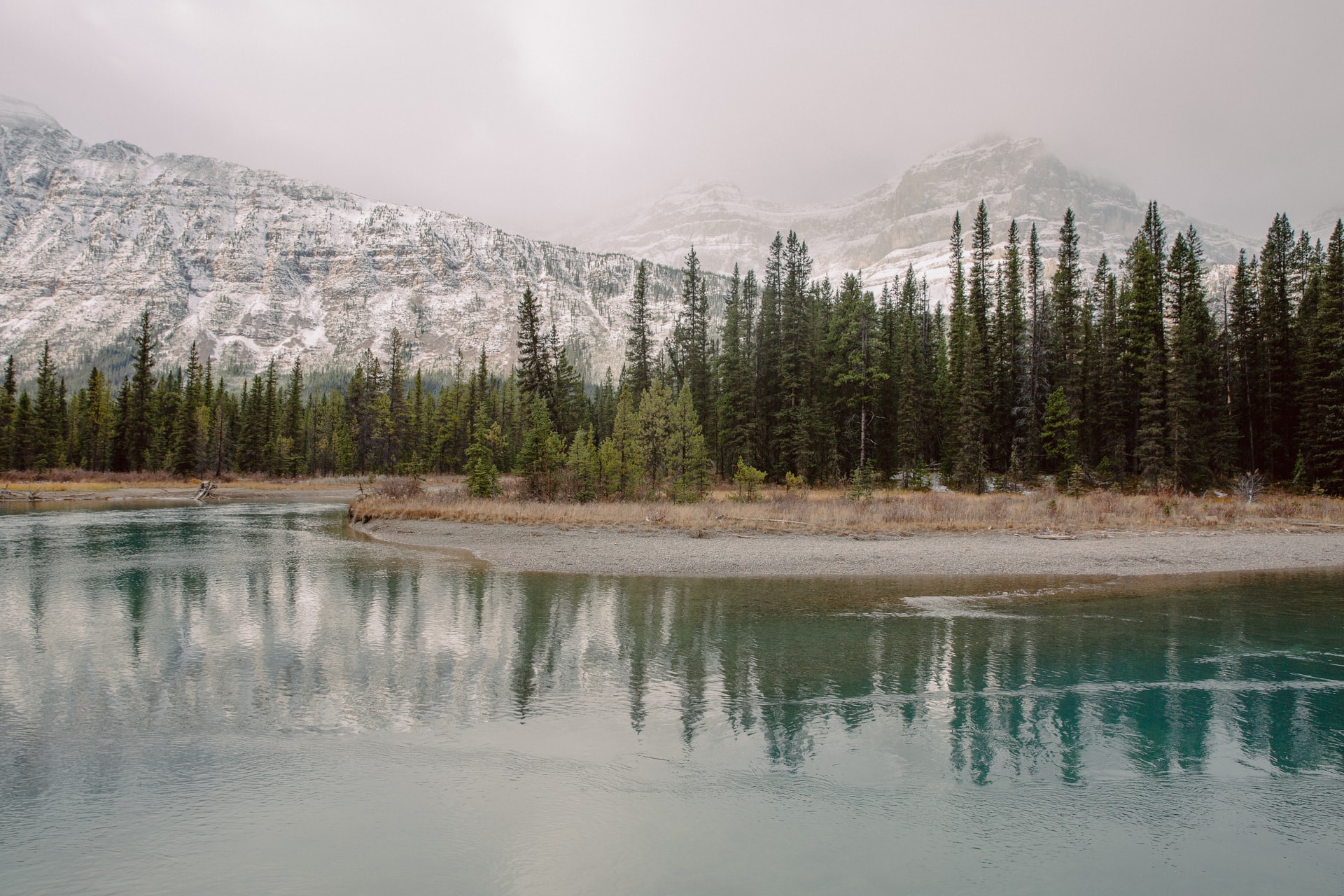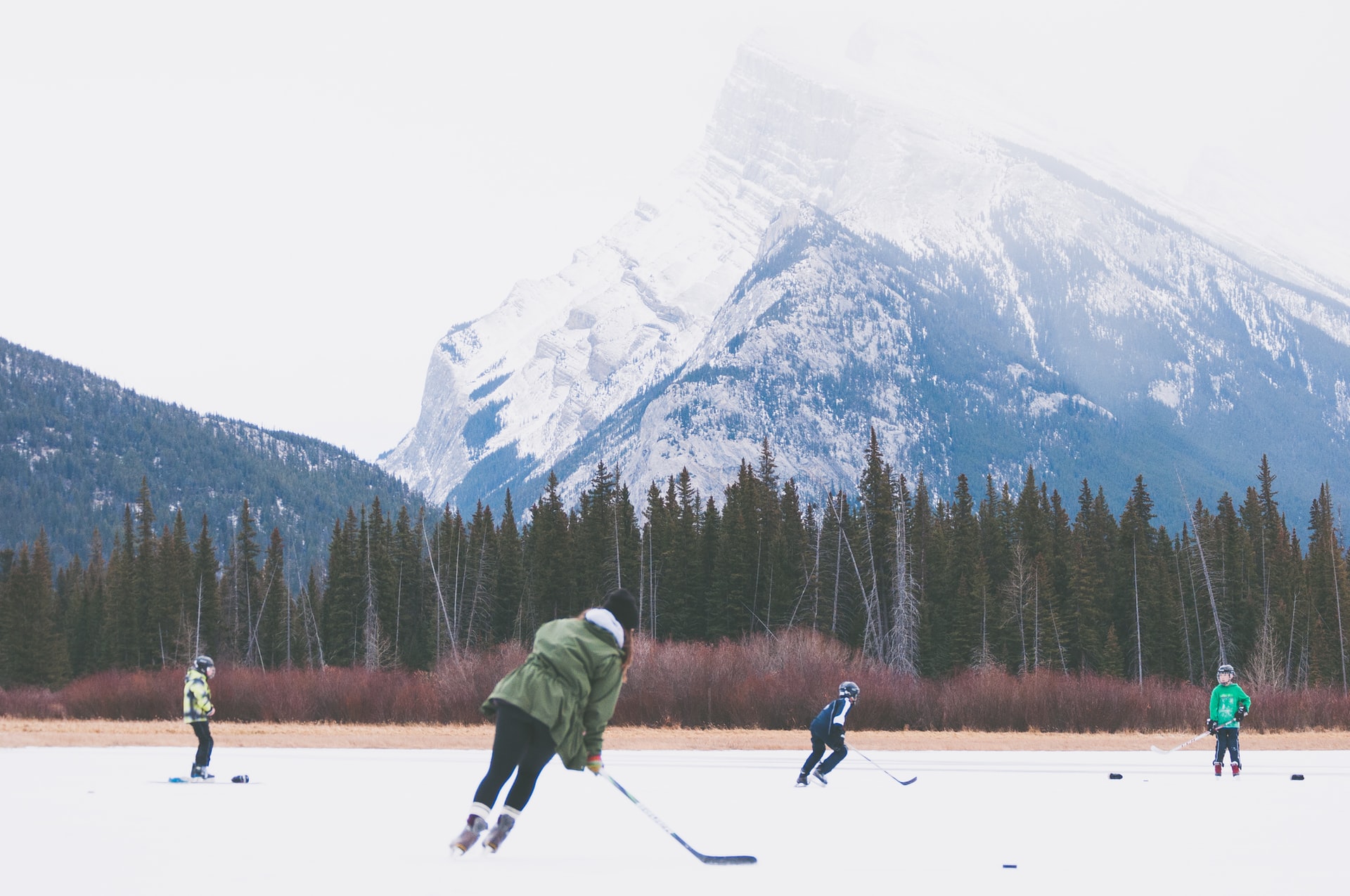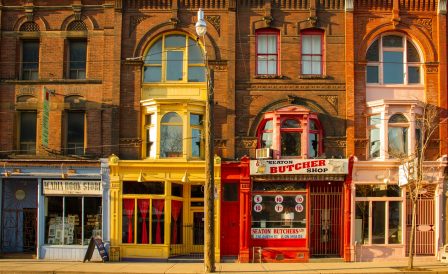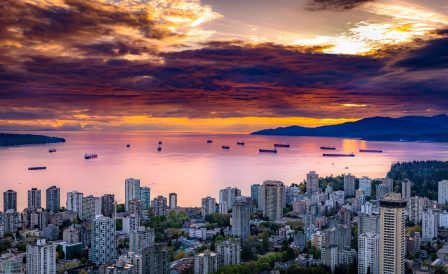Canada is located in the northern part of North America. The southern and northwestern part of the country borders the United States, while the north is surrounded by the waters of the Arctic Ocean. Canada is the second-largest country in the world, second only to Russia. The country occupies a vast territory from the Atlantic Ocean (in the west) to the Pacific Ocean (in the east) and is located in six time zones. All this makes the geography of Canada diverse and very interesting.
Canada is sparsely populated despite its vast territory. The population density is one of the lowest in the world (about three people per 1 km²). Seventy-two per cent of the population lives in major cities near the US border And 60% of urban residents live by the St. Lawrence River and around the Great Lakes. The rest of the country (about 80%) is just deserted wilderness.
The territory of Canada is divided into ten provinces (Alberta, British Columbia, Manitoba, New Brunswick, Newfoundland and Labrador, Nova Scotia, Ontario, Prince Edward Island, Quebec and Saskatchewan) and three territories (Northwest Territories, Nunavut, Yukon). In terms of climate, Canada can be divided into six geo-climate regions: the Appalachians, the St. Lawrence Lowlands and the Great Lakes, the Canadian Shield, the Canadian Inner Plains, the Western Cordillera, and the Arctic Archipelago.

The Appalachians
The Appalachians are located on the east coast of Canada, including Newfoundland, New Brunswick, Prince Edward Island, and Nova Scotia. The region gets its name from the Appalachian mountain range, stretching from northeast to southwest through Canada and the United States. The region differs from others with its rocky shores, picturesque fjords and dense mountain forests. Thanks to the Atlantic Ocean, the region has a temperate climate. Winters are snowy, often with storms, and in summer, the climate is mild and humid. Fog is often possible. The average temperature in winter is from -7C to -15C, in summer from + 15C to + 25C. The farther from the ocean, the greater the temperature difference.
The St. Lawrence Lowlands and the Great Lakes
The St. Lawrence Lowlands and the Great Lakes are among the most densely populated and developed areas in the country. Located here are large cities like Toronto, Montreal, Quebec City and Ottawa, the capital of Canada. A hilly area with forests and green valleys that are incredibly fertile. The area is of significant agricultural and industrial importance for the country, despite the fact that it makes up only a small portion of Canada. The climate here is continental, with warm and humid summers (+20C – +30C), cold, snowy winters (-10C to -15C), with mild autumn and spring.

The Canadian Shield
The Canadian Shield occupies 49 per cent of the country’s territory. The northern part of Saskatchewan, Manitoba, Ontario and Quebec are located here, as well as most of Newfoundland and Labrador. The area’s landscape was formed under the influence of a glacier and looks flat and uniform with thousands of small lakes. Canada has more than two million lakes, making it the world leader in freshwater. Various species of animals live here, including beavers and moose. The region is rich in minerals, and their extraction is an integral part of the Canadian economy. Summers are shorter and cooler than in the south of the country. In the hottest month, July, the air temperature does not rise above + 25C and stays in the region of +10C to +20C. Winters are cold here: -10C to -27C.
The Inner Plains
The Inner Plains extend west of the Canadian Shield across much of Alberta, Saskatchewan, and Manitoba. The vast plain with fertile soil is ideal for the farming and livestock in the area. However, the eastern part of Alberta is arid desert land unsuitable for ploughing.
The climate of the region is continental, but it is drier than in other regions. Due to the dry air, thunderstorms and tornadoes occur periodically there. In winter, an atmospheric phenomenon known as the Alberta Clipper can be seen. The Clipper is a rapid movement of a low-pressure area, bringing cold air currents, strong winds and some snow to the central part of the continent.
Western Cordillera region
British Columbia, the Yukon and a small part of southwestern Alberta are located in the Western Cordillera region. A group of mountain ranges (whose highest points are often more than 3,000 metres) stretches 800 km along Canada’s Pacific coast. This area is the most mountainous in Canada. The mesmerising views of the snow-capped peaks and mountainous landscapes you have probably seen in the photographs were most likely taken here. Five national parks are located in the Rocky Mountain region. Between the Rocky Mountains and the Coastal Mountains of British Columbia lies an area of green valleys and a dry, sunny climate perfect for growing fruit trees and vineyards. British Columbia has the warmest and mildest climate thanks to the influence of the Pacific Ocean and mountains that contain Arctic air masses from the north. On the coast (Vancouver), winters are warm and rainy. The air temperature stays around +3C – +7C in winter and +15C – +22C in summer. The Okanagan Valley has a more continental climate. In January, the temperature can drop to -15C, and in July, it can reach + 30C.

Northern Canada and the Arctic Archipelago
Northern Canada is a large, barren and uninhabited area with a harsh climate and permafrost. This includes the Yukon, Northwest Territories, and Nunavut. In summer, the air warms up no more than +5C, and in winter, the air temperature can drop to -50C, and with strong winds, even -60C. This explains why so few people live there, mainly in small villages along the rivers. Thousands of islands, permanently covered with snow and ice, located in the northern part of the region, form the Arctic archipelago. There are almost no people living there, but it is home to such amazing animals as polar bears, seals and narwhals.
As you can see, Canada’s climate is diverse, and you can enjoy distinct seasons: snowy winters, hot sunny summers, golden autumn and pleasant spring. The beauty and grandeur of the local nature conquer the hearts of travellers from all over the world.



